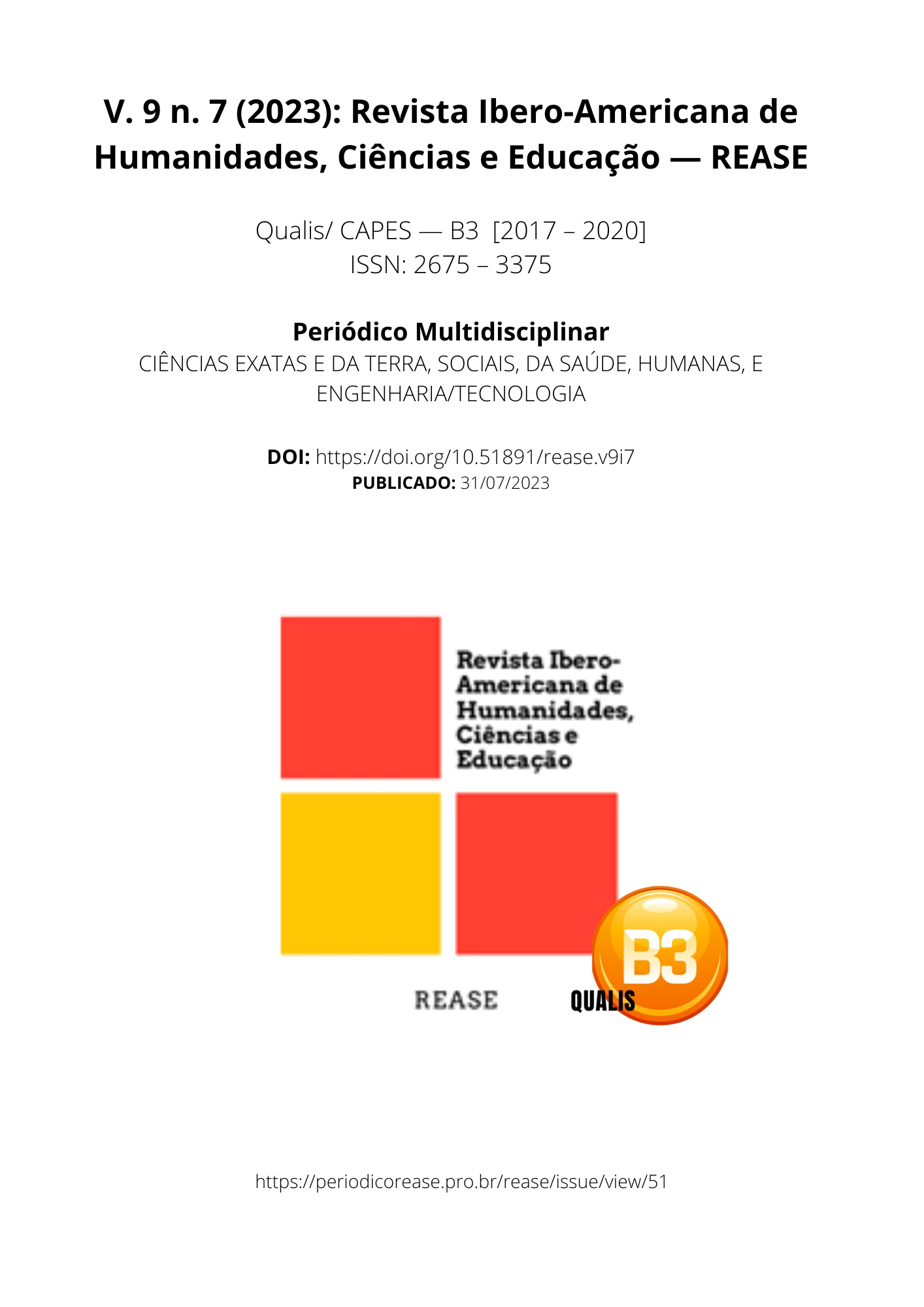ESTRUTURAS DE ESCOLAS DA ZONA RURAL PARA A REALIZAÇÃO DE AULAS DE EDUCAÇÃO FÍSICA
DOI:
https://doi.org/10.51891/rease.v9i7.10622Palavras-chave:
Infraestrutura, Educação Física, Escolas da zona ruralResumo
Objetivo: Analisar a infraestrutura disponibilizada para aulas práticas de Educação Física em escolas públicas na zona rural do município de Campo Maior-PI e Jatobá do Piauí. Métodos: Foi realizado um estudo de corte transversal, que envolveu uma amostra de 6 escolas. Os participantes responderam um questionário com perguntas referentes aos seus aspectos socioeconômicos e sobre as características das infraestruturas disponíveis para a prática de atividade física, baseado no questionário da pesquisa (PENSE, 2019). Após a coleta, os dados foram analisados conforme o especificado pela pesquisa (PENSE, 2019), os dados foram organizados no programa Microsoft Excel, após o processo de tabulação foi feito o percentual dos dados de cada escola e com ao final dessa etapa foi elaborada as tabelas socioeconômicas e sobre a infraestrutura das escolas. Resultados: Os resultados apontam que as características dos aspectos estruturais das escolas avaliadas, 5 (83,3%) escolas possuem aulas no turno manhã e tarde e 1 (16,6%) funciona nos três turnos, sendo todas as 6 (100%) têm a disciplina de educação física em sua grade curricular. As aulas também são ministradas por um professor de Educação Física formado. Sobre a infraestrutura das escolas apenas 1 (16,6%) possui quadra em condições de uso, as demais 5 (83,3%), não possuem quadras, 5 (83,3%) afirmam utilizam o pátio ou outras áreas externas da escola para realização das aulas de Educação Física na escola. Conclusão: Conclui-se que, apesar de a disciplina e do professor de Educação Física estarem presentes em todas as escolas, a maioria das instituições de ensino não ofereciam instalações para aulas práticas de Educação Física.
Downloads
Downloads
Publicado
Como Citar
Edição
Seção
Categorias
Licença
Atribuição CC BY

